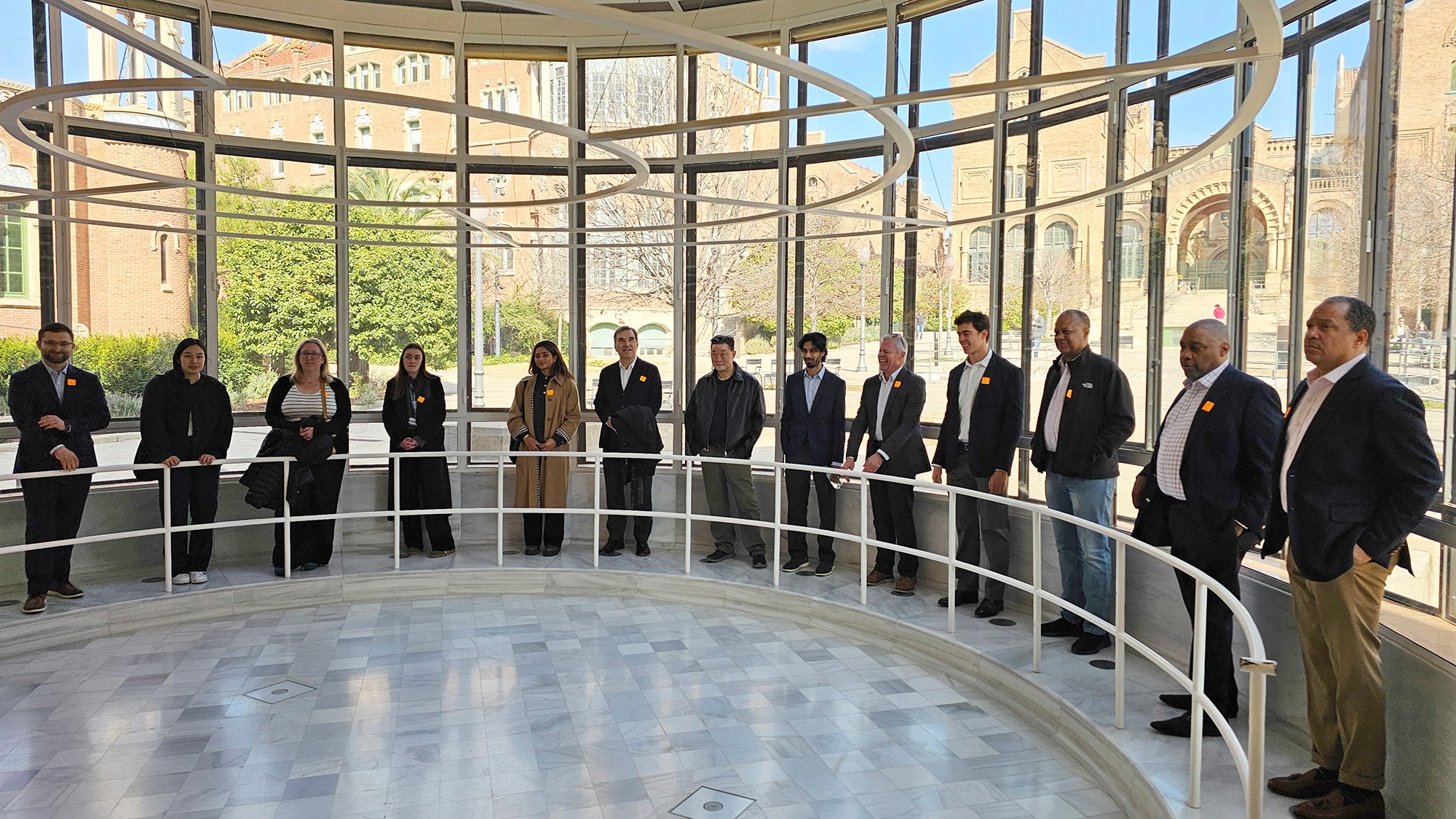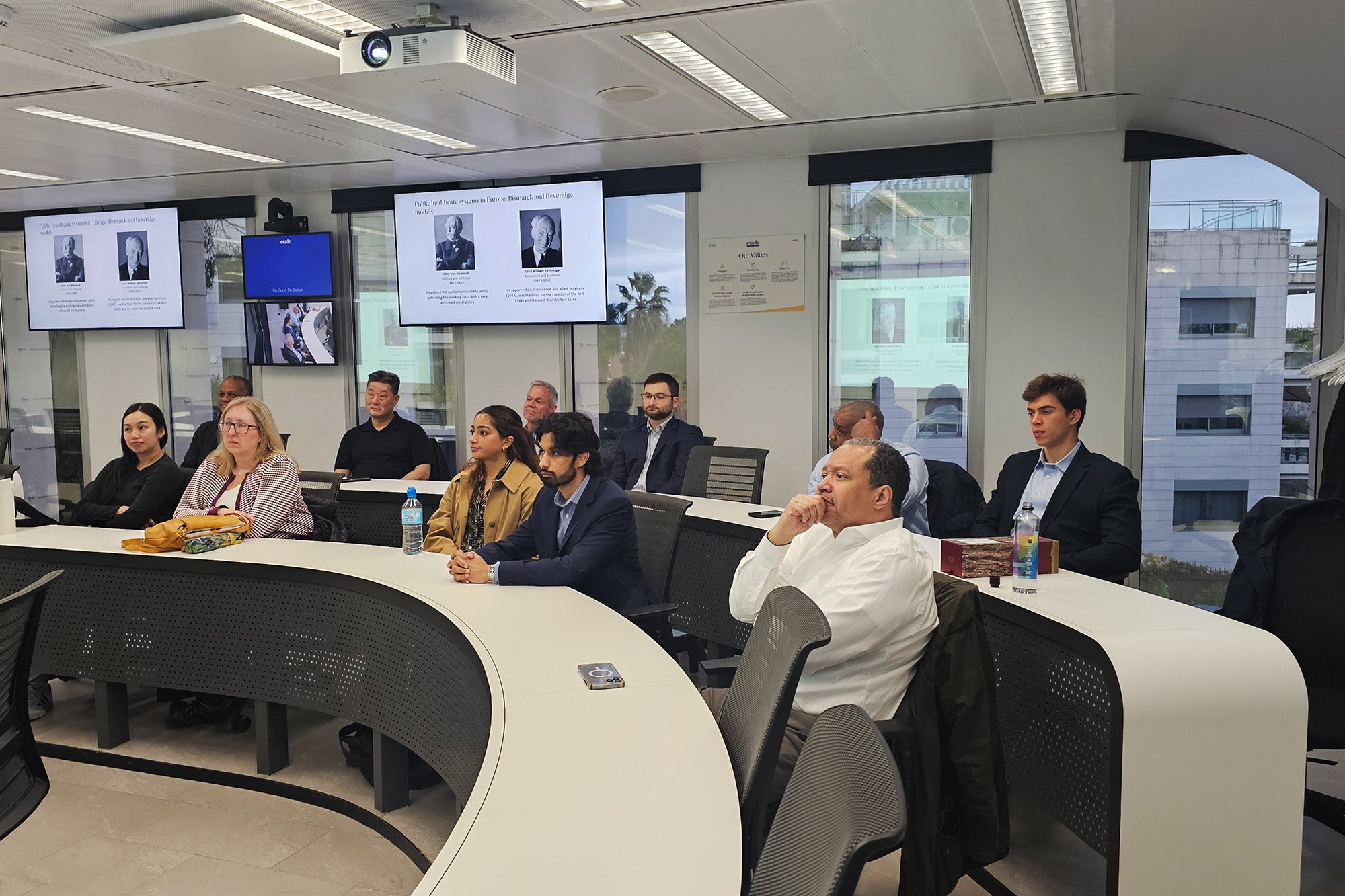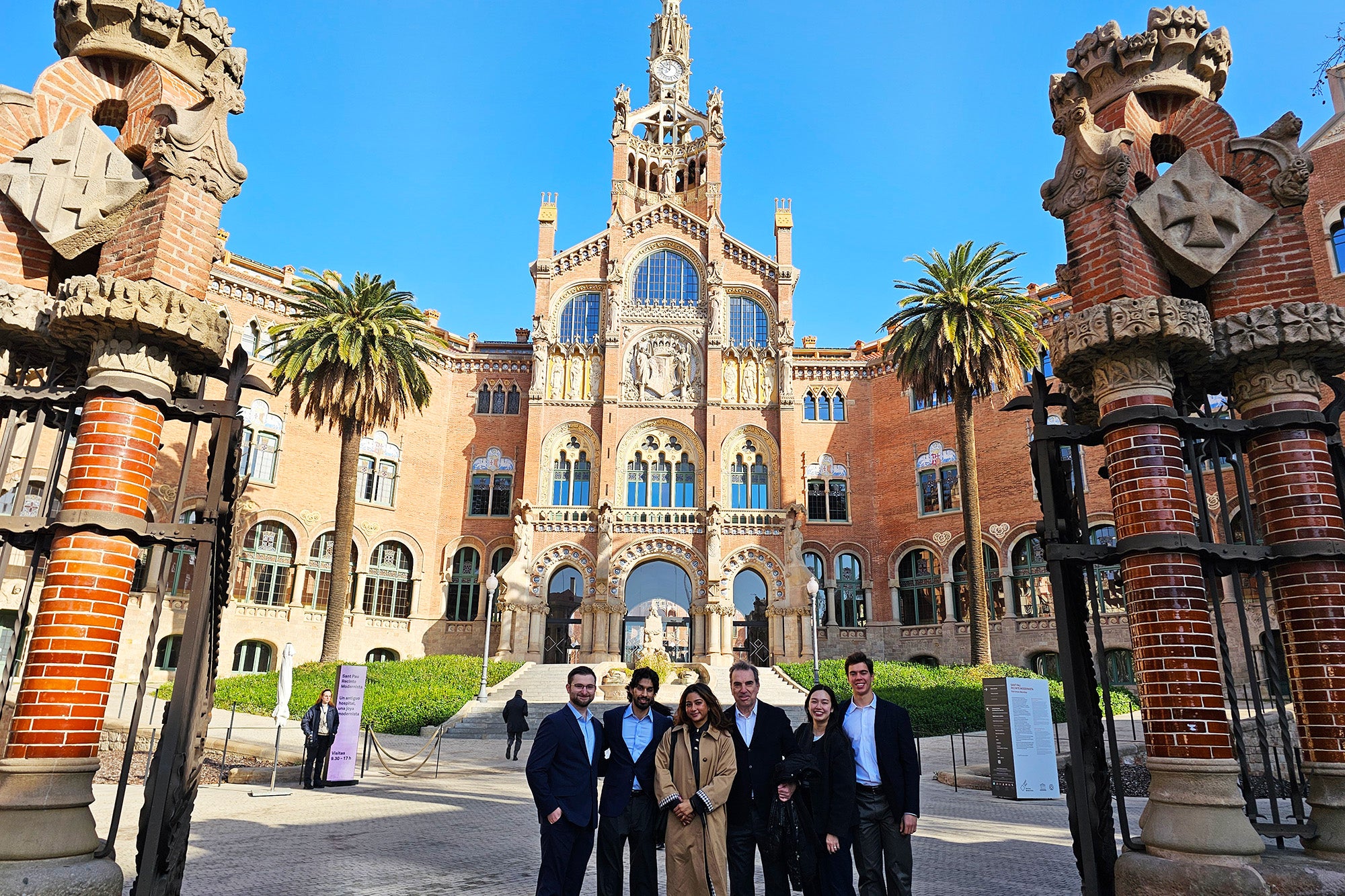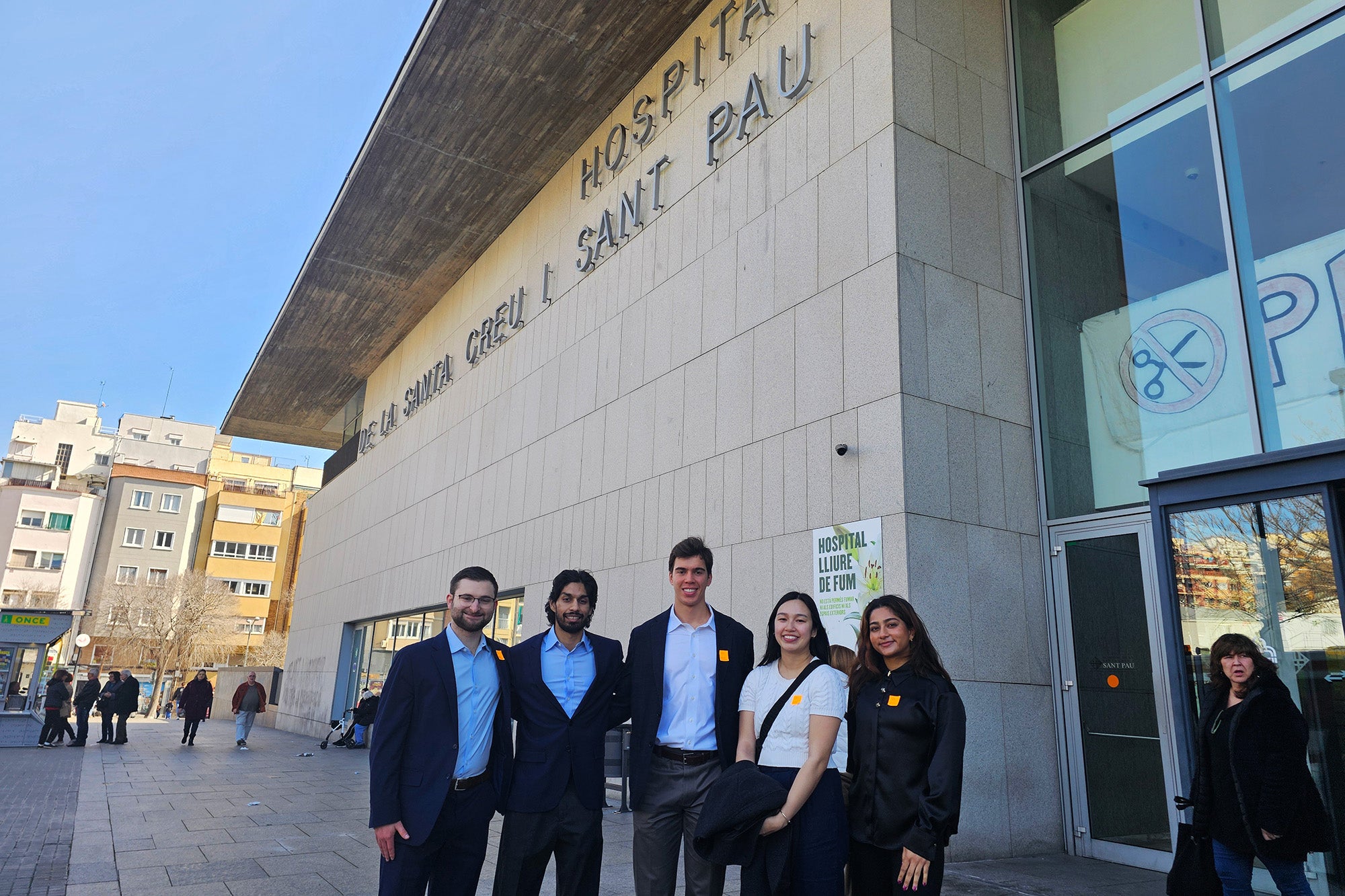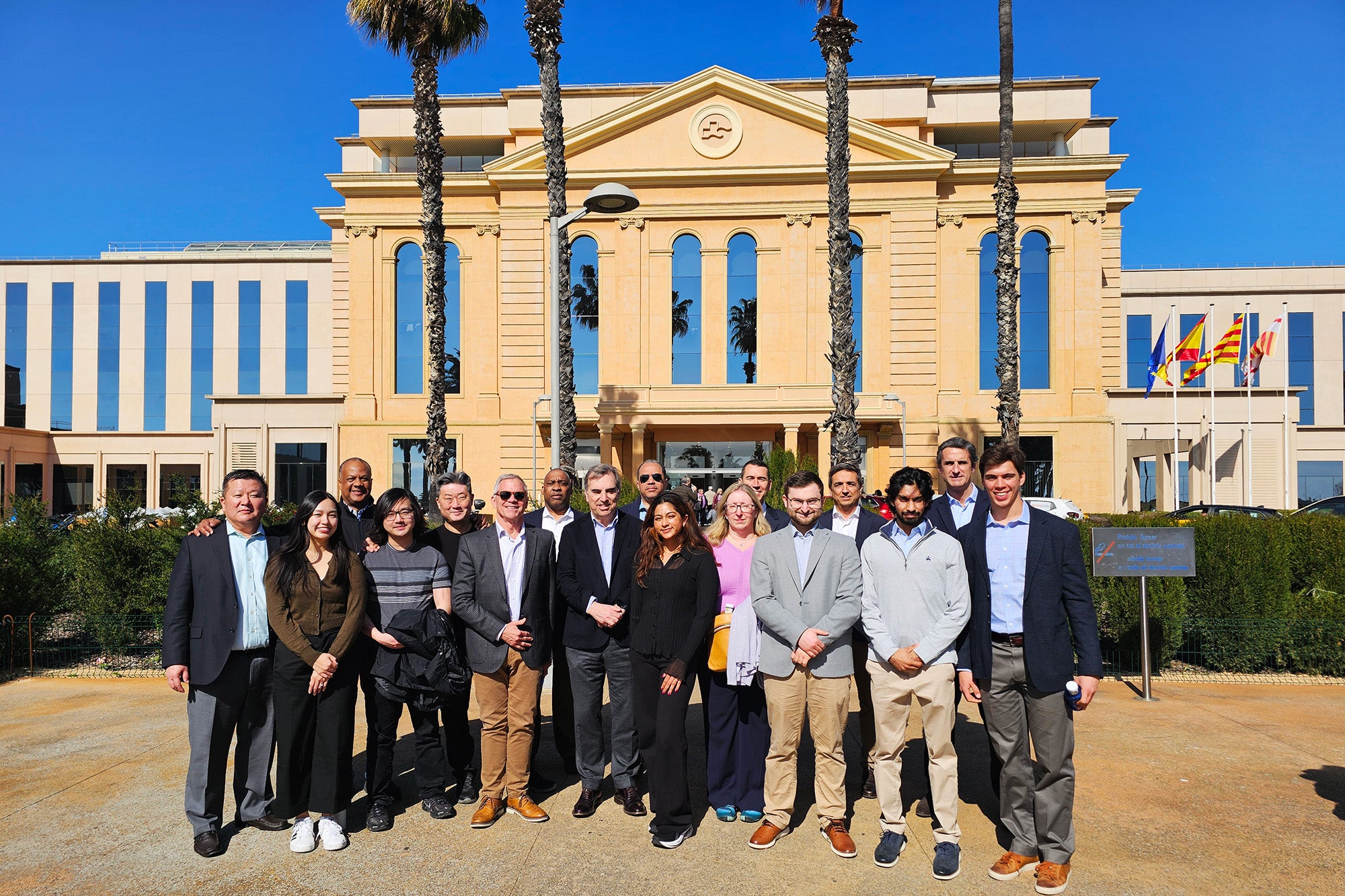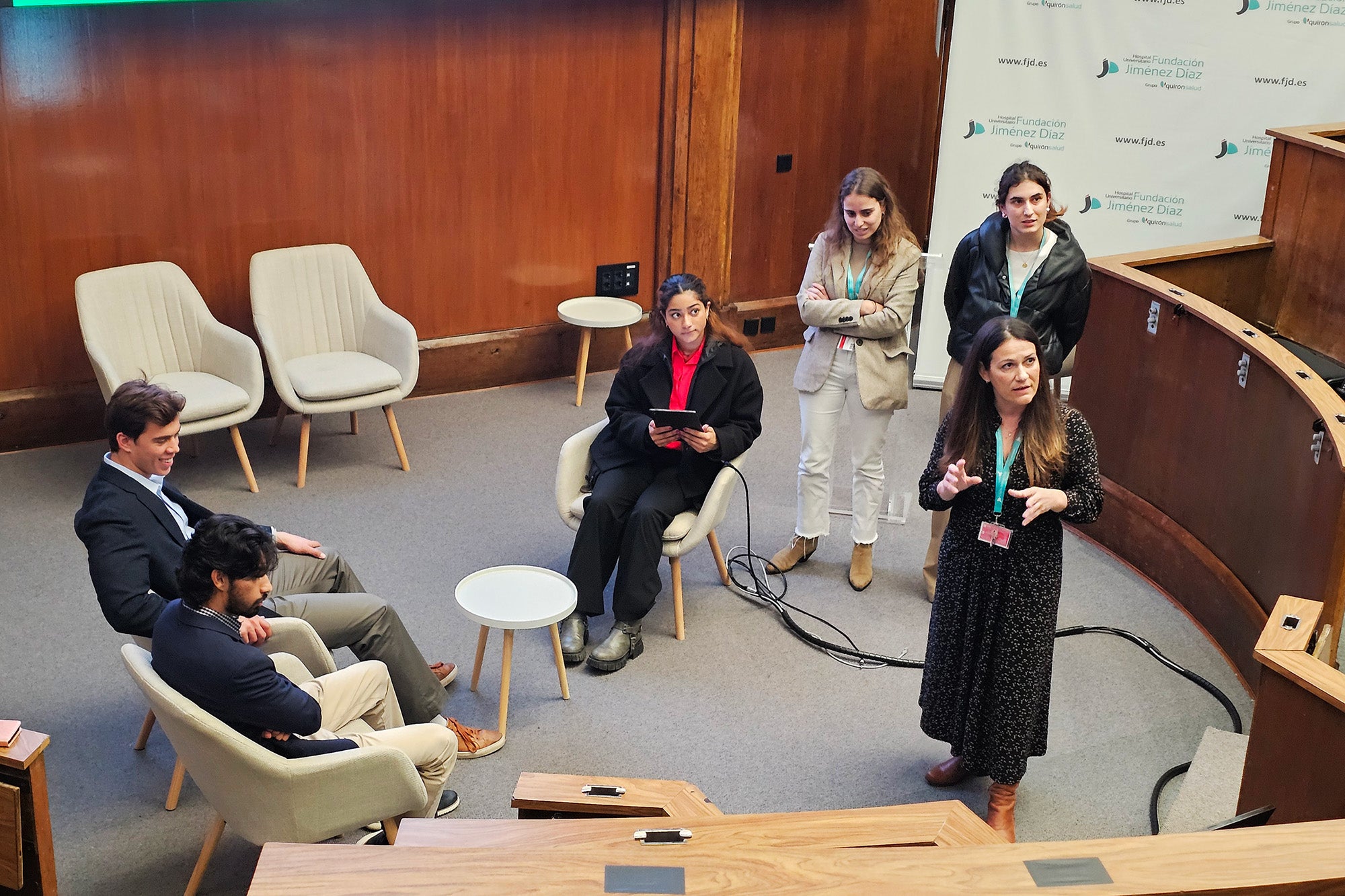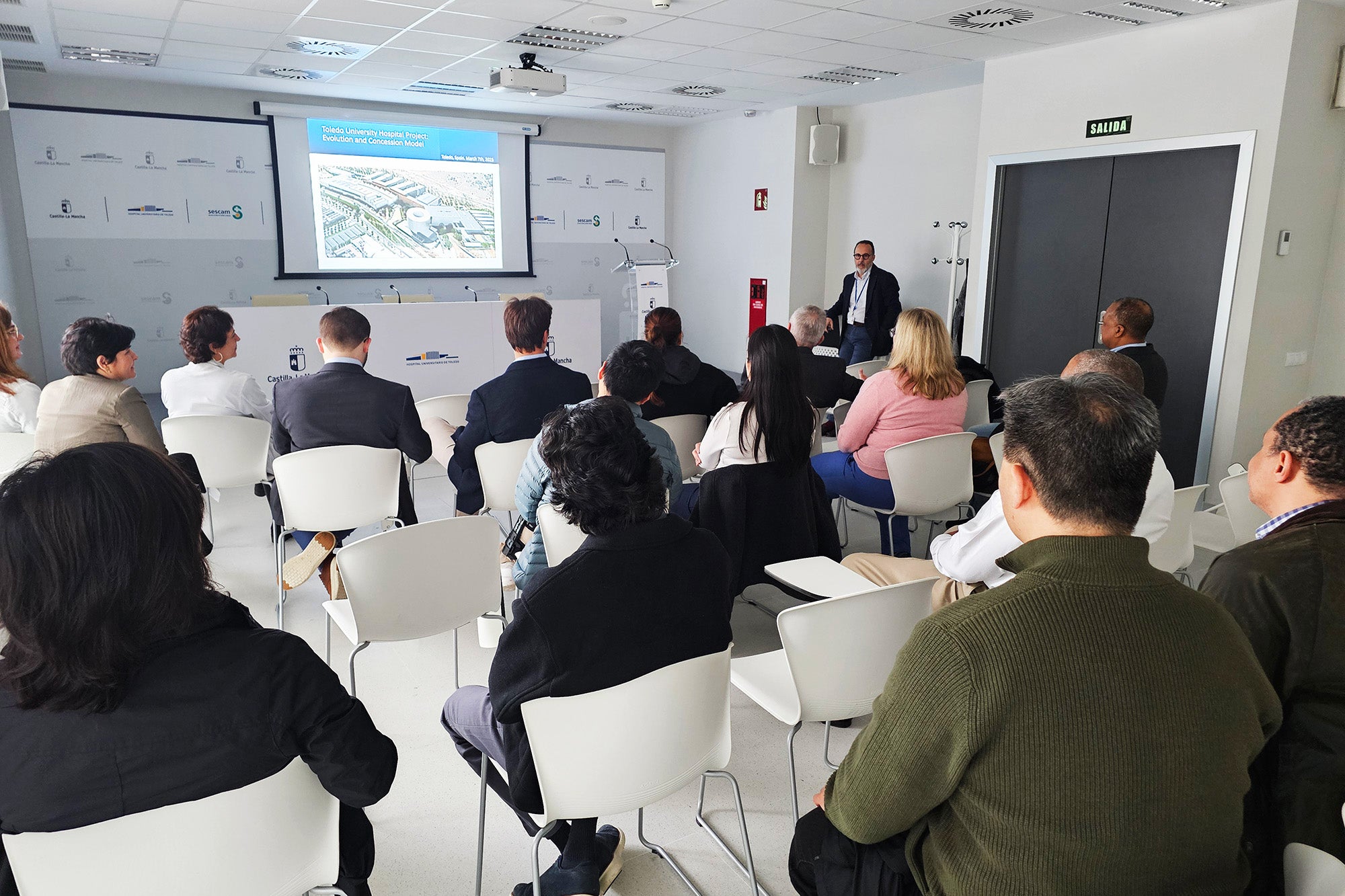Graduate Students Visit Spanish Health Care Facilities as Part of Global Experience
Top Image: MHSA graduate students visited the Sant Pau Art Nouveau Site in Barcelona, Spain, which was the home of the Hospital de la Santa Creu i Sant Pau for more than a century and is now an architectural landmark.
(April 3, 2025) — Graduate students in the Master of Science in Health Systems Administration (MHSA) program traveled to Spain during their spring break to learn about the nation’s health care system as part of an experiential learning opportunity at the School of Health.
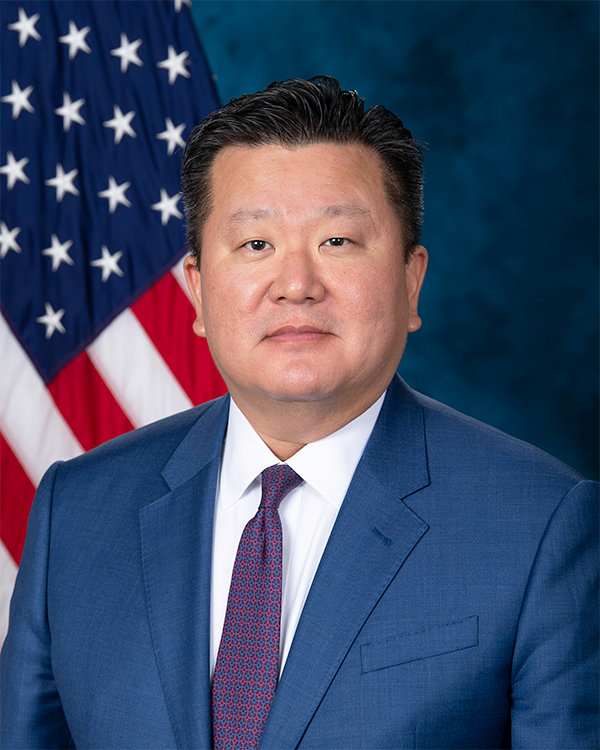
Ryung Suh, MD
“We hear from students that participating in the annual MHSA global experience, where they are able to meet with health system leaders and visit health care facilities in other countries, is the reason they decided to come to Georgetown,” said Ryung Suh, MD, professor emeritus of health management and policy, who led the March trip. “These students value broadening their perspectives of our domestic health care system by exploring how another country approaches health care.”
“While traveling through Spain with my MHSA classmates, we networked with health care leaders, toured innovative hospitals and gained valuable insights into how Spain balances access, quality and cost in its health care system,” said Minivia Fernandes (G’26). “This experience reinforced just how much we can learn from global health care systems and how cross-cultural exchanges can shape us into better health care leaders.”
Exploring a New Health Care System
After completing a series of lectures on the Spanish health care system at the host institute, Esade, the group visited hospitals, clinics and research centers in Barcelona, Madrid and Toledo. Health care leaders from the United States, including a leader in the D.C. Department of Health, accompanied students on the trip, where they also participated in panel discussions with Spanish health care executives.
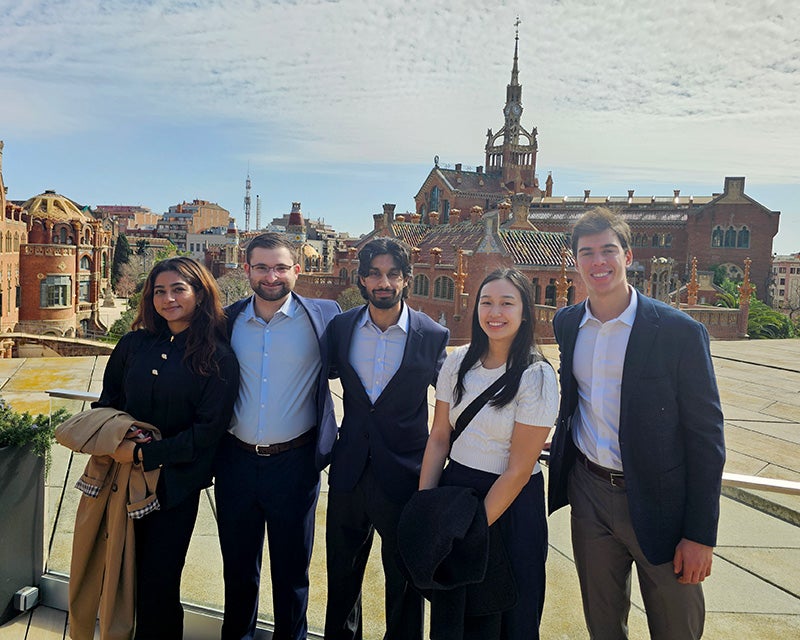
The students who visited Spain included Minivia Fernandes (G’26) (far l) and Angel Phan (G’25) (second from r).
One of the highlights of the trip for Angel Phan (G’25) was visiting Fundació Puigvert, a privately owned nonprofit hospital specializing in urological, nephrological and reproductive disorders. “It was eye-opening to see how this facility seamlessly served both public and private patients, offering a glimpse into how a hospital can operate with two different insurance systems under one roof,” said Phan.
“One of the things that stood out about the Spanish health care system for students is the public health model through which the vast majority of Spanish citizens receive their health care, which is free,” said Suh. “Our students compared the Spanish model to the private health insurance system we have in the United States in thinking through not just costs, but also access and overall care.”
Time for Fellowship
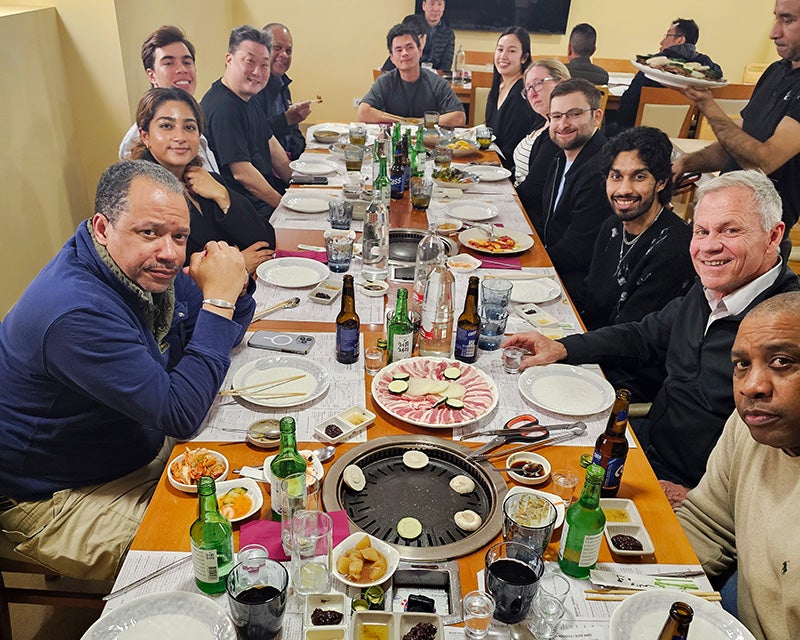
The group enjoyed a lot of tapas together.
Outside the planned daily site visits, students found time to explore their own interests and instigate their own conversations with their fellow travelers.
Fernandes recounted taking time to wander through markets in Madrid and view architecture at La Sagrada Familia. The group also enjoyed a lot of tapas together at shared meals.
“We find that the fellowship that comes through conversations over a meal are one of the most memorable experiences for students,” said Suh.
Heather Wilpone-Welborn
GUMC Communications
Highlights From Spain
A visit to Esade, the group’s host institute, kicked off the week. Associate Professor Manel Peiró Posadas gave students an overview of the Spanish health care system, delving into its rich history and current landscape. He explored its successes, such as universal coverage and accessibility, while also discussing the challenges it faces, including sustainability and resource allocation.
The students had the opportunity to visit the Sant Pau Modernist Site, where they learned about the history of the hospital. The site, with its innovative design and spectacular art-nouveau architecture, was ahead of its time, showcasing groundbreaking approaches to health care that were revolutionary for the era.
The group toured Hospital Sant Pau, followed by a visit to Fundació Puigvert, a privately owned nonprofit hospital specializing in urological, nephrological and reproductive disorders.
Centro Médico Teknon is a renowned private medical center in Barcelona, offering state-of-the-art facilities and advanced health care services. The students learned about Teknon’s remarkable growth and its strong financial performance, which rivals some of the top health care facilities in the U.S.
On a visit to Hospital Universitario Fundación Jiménez Díaz, the students were impressed by how the hospital embraced AI and technology innovations to enhance patient care. The public hospital is at the forefront of piloting new interventions to improve health care delivery.
Students toured the facilities at Hospital Universitario de Toledo and had the opportunity to speak with public doctors who were deeply passionate about their work. Doctors in Spain earn significantly lower salaries compared to their counterparts in the U.S., but enjoy a strong sense of pride and satisfaction in their profession.

